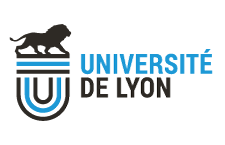Unités de recherche
Partenaire 14: Institut Lumière Matière
Physique
- Adresse :
- LPCML-UMR 5620 CNRS / UCBL
Domaine Scientifique de la Doua
Université Claude Bernard Lyon 1 Bâtiment Alfred Kastler
10 rue Ada Byron (ex-André-Marie Ampère)
69622 Villeurbanne cedex - Sur Internet :
- http://pcml.univ-lyon1.fr/spip.php?rubrique1
- Tutelle :
- UCBL
Organisation
Représentant: Olivier TILLEMENT
Structural, optical and spectroscopic characterization of functional materials, interactions with light and ionizing species together with the synthesis and the design of novel materials, lie at the heart of the activities of the Research Unit “Laboratoire de Physico-Chimie des Matériaux Luminescents”. The involved team in this laboratory is:
Team FENNEC (Project Leader: Olivier Tillement), “Design & fabrication of nanomaterials and crystals”, performs soft chemistry synthesis of hybrid (organic/inorganic) nanomaterials with main orientation to the development and characterization of materials and systems Nano-hybrid particles for biological applications (for example nanoparticles for theranostic); Multifunctionnal contrast agents (MRI, fluorescent nanoprobes, SPECT/PET); Radiosensitizing particles and thanks to a recent integration of physicians, pharmacists and biologists is able to perform pre-clinical and clinical validations.
The team has a recognized experience in the synthesis, the purification and the characterization of hybrid nanoparticles. 2 patents have been submitted for the synthesis of the nanoparticles and 1 about the application of these nanoparticles for radiosensitization. Many publications have been submitted and accepted in international journals with high impact factors. The team is associated to the European COST project: “Theragnostics imaging and therapy: An action to develop novel nanosized systems for imaging-guided drug delivery.”
The team develops and validates multimodal ultrasmall nanoparticles constituted by polysiloxane and gadolinium chelates with imaging (fluorescence, MRI, scintigraphy, X-Rays) and therapeutic (radiosensitization, PdT, Curie-therapy) properties with optimal biodistributions. A second project deals with the synthesis of very well defined core shell particles, with a gold core and a fluorescent polysiloxane shell, used as nanoprobes for diagnostic applications.
The development of multifunctional nanoparticles for biological applications led to three patents (2 about the materials in 2004 and 2010, one about the radiosensitizing effects in 2007) and about 20 publications in the last four years to describe and prove the interest ultrasmall nanostructures based on lanthanide and polysiloxane. At forecast level, the goal is to validate nanometric markers for the follow-up of human cells. The innovations in the domain of optical nano-sensors have also permitted many industrial collaborations and the achievement of about 10 patents
The team is the referent for the “nano-hybrids platform” localized in the LPCML. This equipment is used for the synthesis, the purification (centrifuge, dialysis…) and the characterization (UV/VIS and IR absorption, DLS and zetametry, spectrofluorometers, ICP, relaxometer…) of nano-hybrids. The team has also set-up an in vivo imaging preclinical platform (IMTHERNAT with SPECT-CT and optical imaging) in order to validate the designed particles.
Since 7 years, FENNEC team participates to the annual organization in France of the congress “Nanohybrids” as one of the founder member. The «Trophée INPI de l’innovation 2007 en Rhône-Alpes» award has been granted to the research Unit owing to the dynamism of Professor O. Tillement.



 Accueil
Accueil PRES LYON
PRES LYON Nous contacter
Nous contacter Archives
Archives WebAdmin
WebAdmin